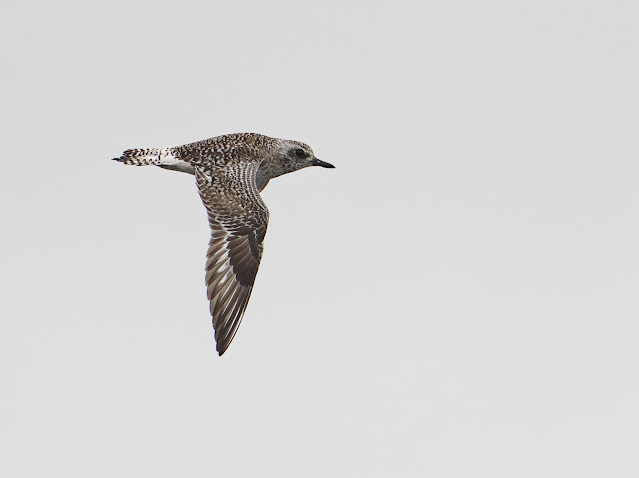 |
| Arctic Tern, Farmoor reservoir |
Wednesday 23rd April looked like a promising day for birding. The brisk easterly wind and rain predicted throughout the morning are classic conditions for overland passage, particularly of waders and terns. I had been gripped by the quality of birding at the big Midlands reservoirs (e.g. Belvide and Draycote) over the past few days, with Oxfordshire having seemingly missed out on all of the action. With early reports of Arctic Tern movement from Staines I was hopeful that this weather front would finally produce some good inland birding in the county.
I arrived at Farmoor in the drizzle just after 8am, and as I walked past the cafe I saw a few hirundines and two Common Terns flying over the causway. Peering through the murk across F1 I could just about make out a large flock of terns flying around in the northwest corner of the reservoir. At least some of these were Arctics from the flight style, although I was struggling to see any details - I had to get closer.
 |
| Initial views of the first Arctic Tern flock |
A very wet Rock Pipit briefly materialised as I hurried along the causeway - a year tick for me.
Upon reaching the hide I briefly took shelter from the rain and started looking through the distant flock - most of the birds appeared to be Arctic Terns (at least 30) but there were also three or four Common Terns, although these seemed not to be associating too closely with the Arctics. Counting the terns from next to the hide, I saw a second large flock drop out of the sky and fly right past me onto F2 - another 45 Arctic Terns! Absolutely fantastic to see inland, and really exceptional numbers for Oxfordshire. I was glad that my hunch with the weather had finally been correct - I guess a stopped clock is right twice a day.
At this point I had to go to an opticians appointment - luckily it was in Botley, only ten minutes away, so I just about managed to tear myself away from the action and headed back to the car park, meeting Dave Lowe and Conor MacKenzie as they arrived. The rain was forecast to continue for much of the morning so I hoped that everything would stay put and indeed that more birds would be brought down. I anxiously waited out the next hour getting trialling some contact lenses before returning to the reservoir at around 10:30. Luckily, it seemed that I hadn't missed anything although the number of birders standing on the causeway had grown considerably!
My first Swifts of the year screeched overhead as I arrived back at the hide. The light had improved considerably and the terns were much closer than before, so I began taking some photos. Most of the shots had white and grey birds against an equally dull grey background but I managed to get a couple where the subject was isolated against the green trees bordering the reservoir. A bit tricky with the changing backgrounds and gloomy lighting, but I can't complain - easily the best photos of Arctic Terns I have ever taken inland.
As I was watching the Arctic Terns another 20 or so flew straight over F2 very high up, powering into the headwind. With around 70 already on F2 and another 30 on F1, this brought the day's total to at least 120 individuals. Who knows how much turnover there actually was throughout the morning!
 |
| High-flying flock of Arctic Terns |
A surge of activity amongst the assembled birders indicated that something else had just been found - walking along the causeway to join them, I saw that a Grey Plover had pitched down and was feeding along the debris at the reservoir edge. It was flushed several times throughout the morning, each time flying high northeast, but always ended up circling round and coming back to the causeway.
I was vaguely aware of someone shouting whilst I was photographing the Grey Plover although it was only when I looked up that I realised that Dave was waving frantically at me - panic! I glanced over the reservoir and couldn't see what they were looking at. Running back down the causeway, the bird of the day was revealed - a fantastic Little Tern which Dave had picked out as it flew in to join the Arctics.
Dunlin and Ringed Plover were arriving throughout the morning, including a fantastic flock of 15 Dunlin that made several close passes. A few Yellow Wagtails and a White Wagtail also dropped in.Whimbrels occasionally flew over (I think I counted four throughout the morning, although others had more). Again a classic time of year for this species.
 |
| Arctic Terns departing Farmoor and continuing on with their migration |


















































